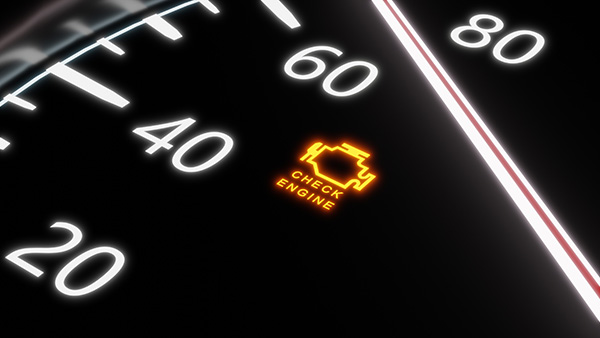
When you think of the check engine light, your first thought might be a gasoline-powered car with engine trouble. But what about electric vehicles? These cars don't have traditional engines, yet they still have check engine lights. So, what does it mean when this warning appears in an EV?
Understanding the purpose of this light in electric vehicles is crucial for preventing minor issues from escalating into major problems. While the systems in an EV differ from those in gas-powered cars, modern EVs are still complex machines packed with sensors, software, and electric drivetrains that need regular oversight.
Why Do EVs Have a Check Engine Light
Even though EVs don’t use internal combustion engines, they have electronic control units (ECUs), battery management systems, and drive motors that can trigger fault codes. The check engine light is a general warning indicator designed to alert you that one or more of these systems aren't operating as they should.
The light might not always point to something serious, but it’s never something you should ignore. It’s a signal that the car’s onboard computer has detected a fault, whether that’s in the electric drive system, battery performance, or even software calibration.
Common Causes of Check Engine Lights in EVs
In electric vehicles, the check engine light might appear due to one of several issues, some minor and others more serious. Here are a few examples:
- Sensor failure or misreading
- Battery management system alerts
- Issues with regenerative braking systems
- Malfunctioning thermal management components
- Software update problems
- Power inverter or converter faults
Unlike older gas-powered vehicles, many EVs can display more detailed messages through the instrument cluster or infotainment screen. Still, a diagnostic scan is often needed to pinpoint the exact cause.
What to Do When the Light Comes On
When the check engine light appears in your EV, it’s important not to panic. However, you should take action quickly. Begin by checking for any accompanying warning messages on the dashboard. Some EVs may offer a message that identifies the problem—like "battery system fault" or "motor control issue."
If the car is still driving normally and there are no strange sounds or changes in performance, it's usually safe to drive to a local shop for diagnostics. But if you notice a drop in power, odd noises, or loss of acceleration, you should pull over and call for professional assistance.
Why Professional Diagnostics Is Needed
Diagnosing EV issues requires specialized knowledge and tools. Not all repair shops are equipped to service electric vehicles, especially when the issue involves high-voltage batteries, power electronics, or proprietary software systems.
Our technicians have experience working with EV platforms from major manufacturers and can perform detailed diagnostics using OEM-grade equipment. Identifying the root of the problem quickly helps you avoid more expensive repairs down the road and ensures your EV stays reliable and efficient.
Signs That Your EV Needs Immediate Attention
- The check engine light is flashing instead of solid
- You experience a significant loss in power or driveability
- The battery range drops suddenly without explanation
- You hear unusual electrical hums or grinding noises
- There’s visible smoke or the smell of burning plastic
A flashing light typically indicates a more serious problem, such as a significant fault in the motor or inverter, and should be addressed immediately.
Take the Guesswork Out of Warning Lights
If the check engine light is on in your electric vehicle, don't leave it to chance. Obtaining an accurate diagnosis from a qualified technician can provide you with peace of mind and help ensure your vehicle continues to run as it should.
Call A Plus Automotive in Kelowna, BC, for expert EV diagnostics and repairs that keep your electric vehicle safe and reliable.